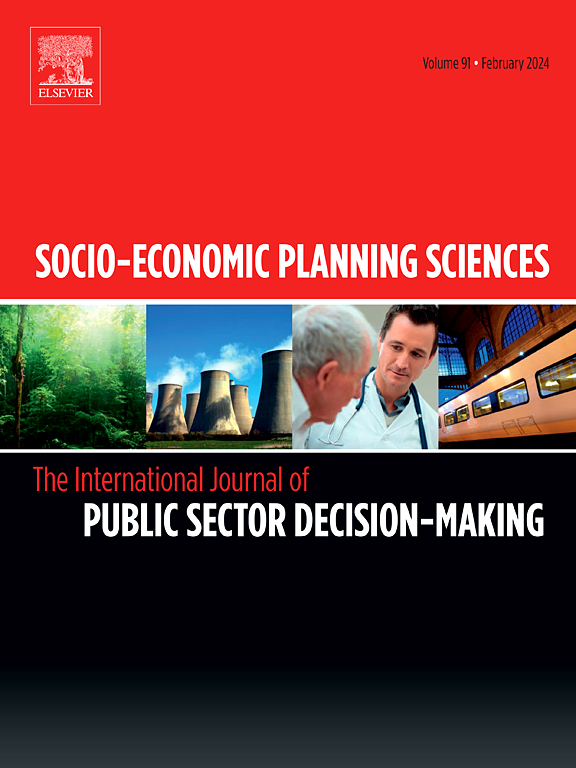经济参与、外援和生产率中的性别差异:实现基础广泛增长的途径
IF 5.4
2区 经济学
Q1 ECONOMICS
引用次数: 0
摘要
性别不平等和减贫是发展中经济体,特别是南部非洲发展共同体(南共体)面临的重大挑战。本文研究了经济参与和对外援助中的性别差异对生产率的影响,具体涉及三个目标:援助医学模式对生产率的影响、长期效应和援助冲击的影响。使用面板完全修正普通最小二乘(FMOLS)、动态普通最小二乘(DOLS)和增广平均群(AMG)估计器,研究检验了长期影响。采用面板矢量误差修正模型(PVECM)分析辅助冲击的影响。对于稳健性检查,就业指标取代了经济参与指标。基线模型的实证结果证实了医学模型关于援助对南部非洲发展共同体的影响的命题,但揭示了援助在其通常形式下具有负系数。扩展模型证明了外援对生产率的长期显著负面影响。然而,当考虑到互动效应时,援助与经济参与相结合对生产率产生了积极影响。值得注意的是,外援和女性经济参与的相互作用显著提高了生产率,而不是单独的总体或男性经济参与。此外,援助冲击对男性经济参与的负面影响大于总体影响,而对女性经济参与的影响最小。这项研究强调了优先考虑女性经济参与援助项目以促进南部非洲发展共同体地区广泛增长的重要性。该研究建议,援助机构应将资源集中在提高女性经济参与的项目上,并在项目完成后仔细评估项目成果。本文章由计算机程序翻译,如有差异,请以英文原文为准。
Gender differential in economic participation, foreign aid and productivity: Pathway to broad-based growth
Gender inequality and poverty reduction are critical challenges in developing economies, particularly in the Southern African Development Community (SADC). This paper investigates the effect of gender differential in economic participation and foreign aid on productivity, specifically addressing three objectives: the efficacy of the medicine model of aid on productivity, the long-run effects, and the impact of aid shocks. Using panel Fully Modified Ordinary Least Squares (FMOLS), Dynamic Ordinary Least Squares (DOLS), and Augmented Mean Group (AMG) estimators, the study examines the long-run impact. The Panel Vector Error Correction Model (PVECM) is employed to analyse the effect of aid shocks. For robustness checks, employment indicators are substituted for economic participation metrics. Empirical findings from the baseline model affirm the medicine model's proposition regarding the implications of aid on the SADC but reveal that aid has a negative coefficient in its ordinary form. The extended model demonstrates a significant and long-run negative impact of foreign aid on productivity. However, when considering the interactive effects, aid combined with economic participation positively influences productivity. Notably, the interaction of foreign aid and female economic participation significantly enhances productivity more than aggregate or male economic participation alone. Additionally, aid shocks negatively affect male economic participation more than the aggregate, with female economic participation being the least impacted. The study underlines the importance of prioritising female economic participation in aid programs to promote broad-based growth in the SADC region. The study recommends that aid agencies focus resources on projects that enhance female economic participation and meticulously evaluate project outcomes upon completion.
求助全文
通过发布文献求助,成功后即可免费获取论文全文。
去求助
来源期刊

Socio-economic Planning Sciences
OPERATIONS RESEARCH & MANAGEMENT SCIENCE-
CiteScore
9.40
自引率
13.10%
发文量
294
审稿时长
58 days
期刊介绍:
Studies directed toward the more effective utilization of existing resources, e.g. mathematical programming models of health care delivery systems with relevance to more effective program design; systems analysis of fire outbreaks and its relevance to the location of fire stations; statistical analysis of the efficiency of a developing country economy or industry.
Studies relating to the interaction of various segments of society and technology, e.g. the effects of government health policies on the utilization and design of hospital facilities; the relationship between housing density and the demands on public transportation or other service facilities: patterns and implications of urban development and air or water pollution.
Studies devoted to the anticipations of and response to future needs for social, health and other human services, e.g. the relationship between industrial growth and the development of educational resources in affected areas; investigation of future demands for material and child health resources in a developing country; design of effective recycling in an urban setting.
 求助内容:
求助内容: 应助结果提醒方式:
应助结果提醒方式:


